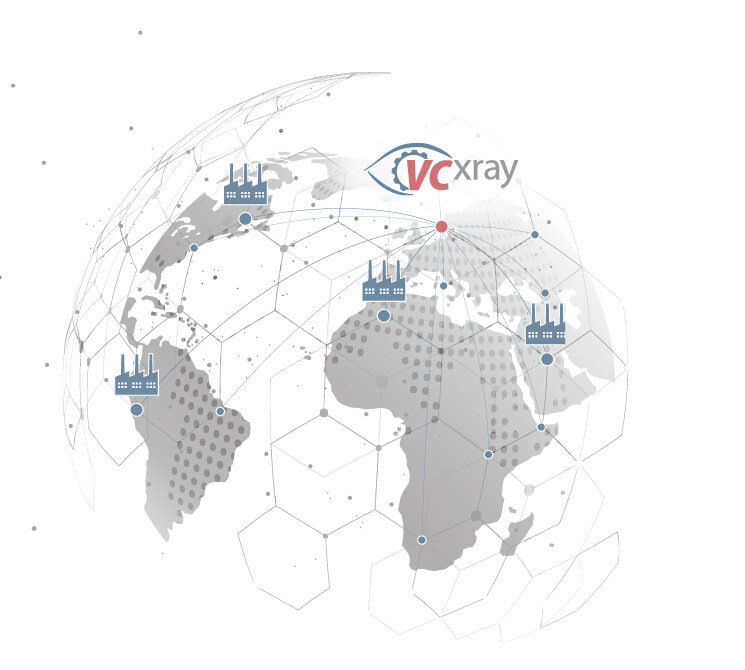
X-ray inspection systems for Aerospace
Aerospace is highly relevant because it plays a significant economic role, enables connectivity and mobility between countries, and promotes global trade and tourism. It also plays an important role in rescue and relief operations, drives scientific research, develops remote areas, contributes to security and defense, and symbolizes human ambition and progress. Aerospace has a broad impact on modern society and demonstrates man's pursuit of exploration and progress.
Aerospace component manufacturing is characterized by high-quality standards, specialized materials, precision manufacturing, certifications, strict quality assurance, a drive for innovation, complexity, partnerships, and a demanding supply chain. It is focused on producing highly accurate and reliable components that meet the stringent safety requirements of the aerospace industry.
Non-destructive material testing (NDT) is of great importance in aerospace as it ensures aircraft safety. NDT procedures can detect potential defects and damage in components at an early stage, before they could lead to accidents or operational disruptions. NDT also enables compliance with regulations, saves costs and time, ensures quality assurance and detects invisible defects. Overall, NDT helps improve aircraft reliability and performance and meet the aerospace industry's high safety standards.
X-ray technology is used in the aerospace industry for non-destructive material testing to verify the integrity and quality of aircraft components. X-rays are used to look inside materials and components without damaging them.
During the manufacture of aircraft components, especially when metal parts are joined by welding, it is critical to check the quality of the welds. X-ray inspection allows detection of potential weld defects, such as cracks or air pockets, that could compromise structural integrity.
X-ray inspection is used to screen the internal structures of aircraft parts such as wings, engines, landing gears and structural components. This can detect hidden flaws or defects such as air pockets, voids, cracks or corrosion that are not visually apparent.
Modern aircraft increasingly use composite materials such as carbon fiber composites, which present a particular challenge for materials inspection. X-ray technology enables inspection of these materials for potential defects or delamination.
During aircraft maintenance (MRO), an X-ray inspection is performed to verify the structural integrity of repaired or maintained components before they are returned to service.
X-ray technology is used during the production of aircraft components to ensure that the manufactured parts meet high safety standards and quality requirements.
Using 3D computed tomography (CT) offers additional benefits to users in the inspection of aerospace components. With high-resolution 3D imaging, it enables comprehensive inspection, of internal structures. CT detects hidden defects such as cracks or delaminations at an early stage and enables precise dimensional measurements. Non-contact inspection saves time, costs and minimizes the risk of damage. CT contributes to aircraft safety, quality assurance, and airworthiness, making it an indispensable tool in the aerospace industry.
In aerospace, several standards and norms for non-destructive testing (NDT) must be followed to ensure the safety and quality of aircraft components. Here are some of the most important standards relevant to the aerospace industry:
These standards have been developed by various organizations such as ASTM International, the European Committee for Standardization (CEN) and the National Aerospace and Defense Contractors Accreditation Program (NADCAP). They are internationally recognized and serve as a guide for conducting nondestructive materials testing in the aerospace industry. Compliance with these standards is critical to ensure the airworthiness and quality of aircraft components and to meet the high safety standards of the aerospace industry. As these standards are accompanied by high demands on the test equipment, it is highly recommended to have the design of a test system verified by a specialist company before implementation. VCxray has a team of application specialists that can assist with implementation.
Materials testing in aerospace faces several challenges, such as complex structures, the use of composite materials, size and number of components to be tested, real-time testing, sensitivity and specificity of test methods, maintenance and servicing challenges, and cost and efficiency issues. In particular, it is subject to stringent regulatory requirements and standards. Test methods must comply with these requirements to ensure aircraft certification and airworthiness. In addition, testing requires qualified and certified personnel to properly apply the methods and obtain correct results. Qualification processes can often take several years and be very expensive. By working with an experienced and professional solution provider, this can be significantly optimized.
The quality control requirements of aerospace component manufacturers vary widely due to the complex spectrum of components. These range from the need for large gantry systems for turbine housings or structural components to high-volume inspection with an automated in-line system, to high-precision CT scanners in the laboratory. Typically, extensive application studies are required to verify feasibility and standards compliance prior to procurement.
Selecting the right system can be complex, and a good decision must weigh many parameters such as size, speed, cost, etc. Contact our product specialists for further guidance.
Contact us today
Improve the quality and safety of your components with our state-of-the-art X-ray systems and CT systems. Contact us today to learn more about our material inspection solutions. Our team is always available to answer your questions and develop a customized solution for your needs.

With our Service centers and Hubs worldwide,
we will complete your staff with maximum
efficiency in your specified time frame and
without interrupting your operations.
No matter where you are, we are never far away.
Our knowledge and experience
maximize your company‘s profits.